The Top 6 Pitfalls Of Guest Blogging (And How To Avoid Them)
-

Aaron Gray
- Blogs
-
 January 30 , 2023
January 30 , 2023 -
 14 min read
14 min read
Google doesn’t like guest blogging. Yes, you read that right.

Make no mistake: The search engine giant is all for engaging and informative content, and articles and blog posts are viable media. That’s essentially the reason behind the Panda update. But while Google Webmaster Trends analyst John Mueller said Google isn’t penalising guest blogs, it isn’t factoring them that much into a site’s rankings either.
As a result, guest blogging is a relatively low-risk, rewarding content marketing strategy. Many industry professionals concur that it’s still a viable strategy moving forward, but know that a few well-written pieces won’t be enough to rake in major benefits. At the same time, guest blogging by the tens or hundreds increases the risk of scrutiny by Google.
If that’s the case, then why are we still doing it? Simple: People love blogs.
Multiple industry sources show that three out of four internet users spend roughly a quarter of their time reading blogs. Around 60% said they purchased something after reading a blog post. The shift in consumer behaviour toward seeking answers from simply seeking a good product or service has put blogs in an advantageous position. Blogs provide information, after all.
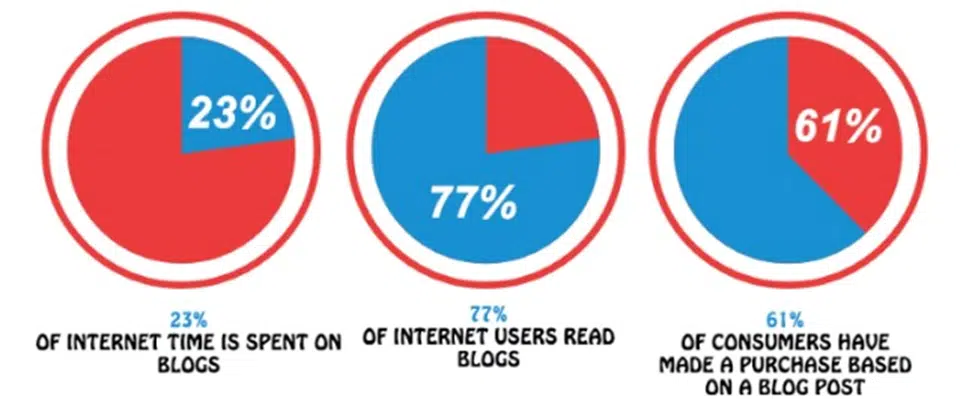
It’s no surprise that businesses want to harness the marketability of blogs, even if some of them don’t have the time nor resources to manage one. Upload blog posts consistently enough, and their benefits will compound over time. As for their pitfalls, there’s ways to work around them. Let’s look at the pitfalls below.
- Blog Mismatch
The first step in every guest blogging endeavour is finding the best opportunities on the internet. You won’t find any shortage on that front, as statistics claim that more than 600 million blogs exist – roughly a third of all known websites. Every day, blogs upload a total of six million posts of varying word counts.
However not all websites or blogs may suit. Let’s do an example:
Let’s say you’re a finance website. Guest posting on a business blog is a good opportunity. However, asking to post on a gardening blog isn’t. Most blogs would refuse a guest post if the topic didn’t fit their niche (unless they’re news sites or blogs that encompass a broad topic, such as technology or healthcare).
Fortunately, finding such opportunities is easier than you might think. Below are some examples that would-be guest bloggers swear by.
A)‘Write for us’ search string
Search engine math is a nifty feature; it lets users narrow down the results by subtracting or specifying terms. In this case, you can find guest posting opportunities by putting together a specific keyword and the term ‘write for us’ or something to that effect. If guest posting for the term ‘link building’, the strings should look something like the following:
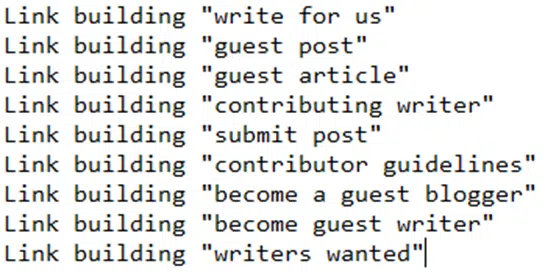
There’s plenty more where those came from, but you get the idea. Don’t forget to enclose the ‘write for us’ clusters in quotation marks to improve search results.
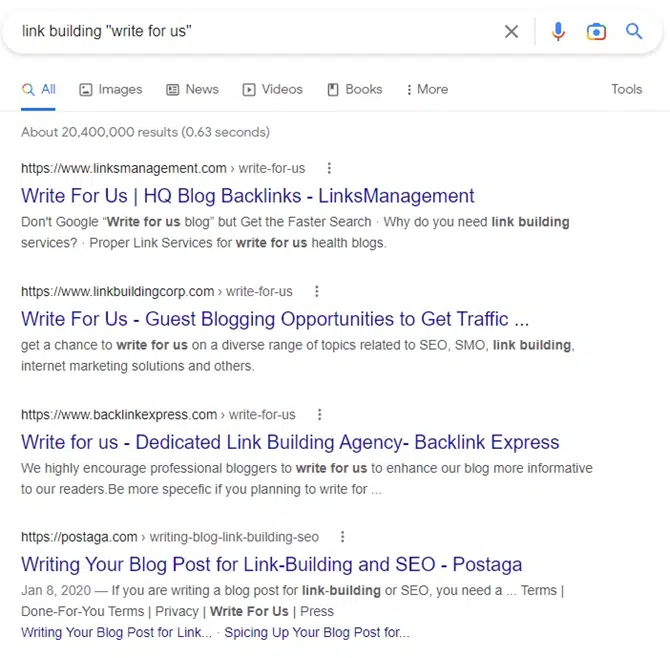
Note that this trick works on Twitter, as well.

B)Author portrait image search
Many blog posts feature a short bio of their authors and their portraits. If you’re reading one, run their portrait on Google’s reverse image search, which is as simple as left-clicking it and selecting ‘Search the web for image.’ For example, let’s use my portrait on the NO-BS Our Team page.
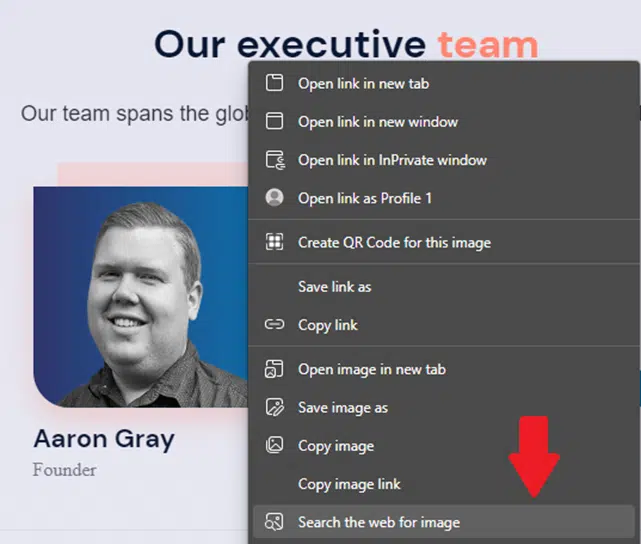
Apart from most of the top five relevant results linking to the NO-BS blog, the last one hails from Social Champ. That’s from a June interview on improving one’s brand image on social media. On that note, Social Champ accepts guest blogging.
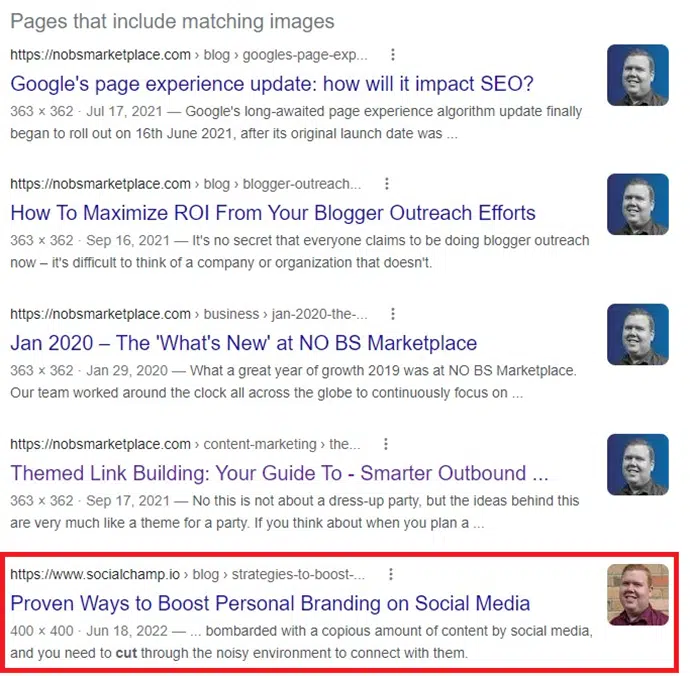
C)Scouring the competitor’s backlinks
You can check their backlinks for guest blogger opportunities if a competitor ranks high on a specific keyword. This approach will need third-party SEO tools like Ahrefs and SEMRush, as they can collect and show backlink data.

This trick involves sifting through plenty of irrelevant results. As the example above shows, writing for Wikipedia isn’t exactly a good idea (it’s wary about content written like an ad or promo). But in between such results are golden opportunities, perhaps even blogs that don’t openly say they accept guest blogging.
‘I know some well-known publishers. Why not there?’ If you’re referring to high-authority sites like Forbes or Entrepreneur, those places get too many proposals from guest bloggers on top of the news stories they have to publish. Most of them end up unanswered, if not rejected outright. You’d want to get your piece published versus looking for a blog with millions of visitors.
- Rigorous Guidelines
- Dull pitch
- Name of the editor (if not available, the blog’s name)
- Name of the blog site
- Link to the article where the aspiring guest writer interacted
- At least three article ideas to endorse to the editorial staff
- Link to the guest writer’s article on a different blog or site
- The guest writer’s name
- Unnatural link profiles
- Editorial pitfalls
- Follow-ups
No one wants to read half-baked content, not even a blog’s busy editorial staff. They get plenty of publication requests daily, and it’s their job to peruse through them and cherry-pick the ones that make the grade. If they start accepting every post without regard for quality or niche relevance, the blog’s standing will suffer, especially in Google’s eyes.
As such, blogs ask writers to adhere to certain rules, from the tone of voice used to the max allowable links in the article. While not an issue to some, they can feel restrictive to others. The example below asks articles to stick to specific font sizes for titles, sub-headers, and body text.

Unfortunately, writing a guest post on the blog’s terms can be a drawback. Not everyone agrees on how a blog should present information, and the creative liberties that guest bloggers take can prompt editors to refuse the submission entirely.
There’s no workaround for this other than following the guidelines to a T. Experts recommend reading a few of the blog’s recently published articles to get a feel for the blog’s preferred tone and style. Additionally, read the guidelines fully, so you don’t miss crucial details.
If editors ask for revisions, the best recourse is to accept them. The State of Digital Media 2021 report indicated that editors look for three critical qualities in a guest post, namely:

The report also stated that most editorial teams said they would increase or maintain the number of guest-authored content on their sites. Not following what they like to see in an article wastes a business’s chance of much-needed exposure in a niche audience.
With an onsite blog section, a business has complete control of the content they want to show its visitors, not to mention the editorial schedule. We can publish regular content on our blog page every few weeks or so because we manage the blog with the rest of the website.
However, the same can’t be said for guest posting. A blog’s editorial staff gets so many emails that would-be guest writers only have a limited window to catch an editor’s attention, let alone impress them. The average number of pitches they get varies by Domain Authority (DA). Sites with a DA score of 65 or less get around 10 pitches, while those scoring 66 or more get triple.
Given this, delivering a pitch that piques the editorial’s interest is a must. The example below is a ‘battle-tested’ template attested by Backlinko’s Brian Dean.
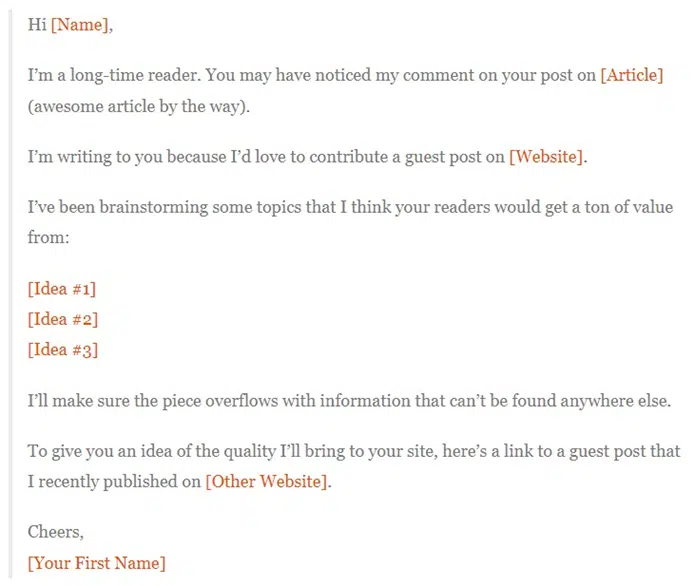
As you may have noticed, a pitch isn’t anything like a formal letter. It engages the editor in casual talk without a lot of fluff. To sum it up, a good pitch contains:
That’s pretty much it, no fluff, no filler. Keeping the message under 150 words can help keep the editor’s attention. Strangely, in one study, many editors don’t mind loading pitches with memes and animated GIF images as long as they’re appropriate and aren’t overused.
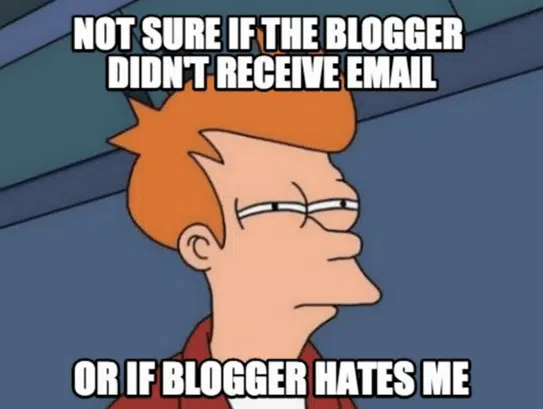
Now, we don’t suggest using the template above word for word. Editors know how to spot pitches that have also been used on other submissions, which is why every pitch sent should be personalised. Barring bad grammar, nothing annoys an editor more than an email that’s the same as those sent to 10 other editors.
One big reason for Google’s stand on guest blogging is that it’s prone to link building abuse. In 2017, it released a statement regarding an increase in link spam embedded in guest-written and syndicated posts. Google says guest posting is fine for informing or educating people, but if it’s for passing link juice to a website, it won’t hesitate to take action.
Aside from the article’s author, penalties for spammy or link-heavy content will affect the publisher’s site. To avoid earning Google’s ire, blogs limit the number of dofollow links a post can have (typically one or two). Some blogs require high-authority links (e.g., academic papers and government statements) to support the article’s points and arguments.
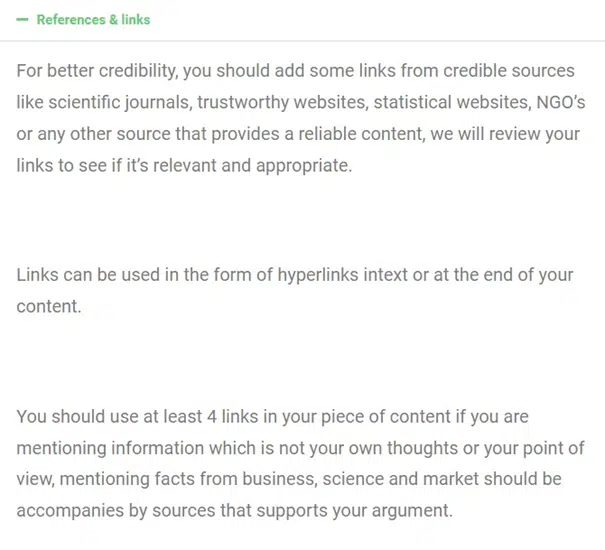
In the end, guest writing is all about sharing fresh insights. It isn’t quality content if it doesn’t teach people anything new.
As such, the solution to this pitfall is simple: write for content, not links. Have you stumbled upon a recent study and want to provide your expert feedback? Provide links to the study and other supporting sources in the article. Don’t be afraid about not getting backlinks this way; people will eventually find their way to the author and their website.
Here’s another fact: Experts say most bloggers prefer that guest articles link to other blogs than the author’s website. You can take advantage of this with second-tier link building. The graph below by Ahrefs best explains how this underutilised strategy works.
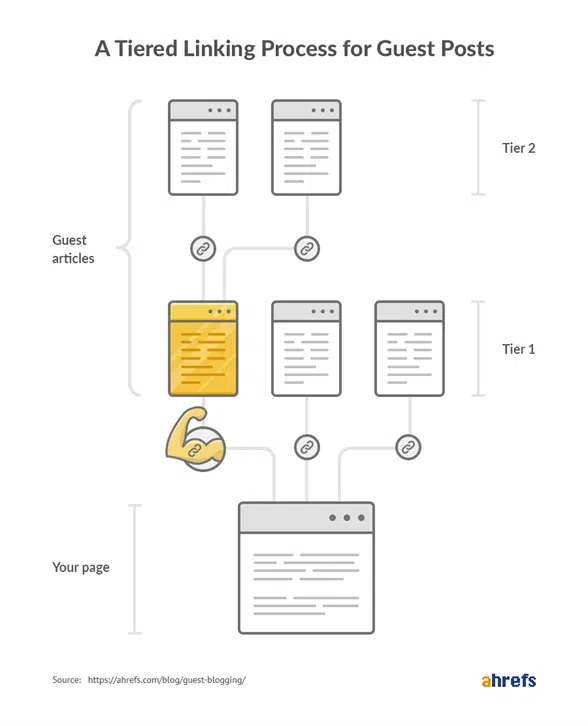
Second-tier link building harnesses PageRank, one of the Google algorithm’s countless ranking factors. It increases a tier-1 guest post’s link strength by linking from a few tier-2 guest posts. The result is a win-win scenario: The website receives quality backlinks, and blogs get backlinks from other quality blogs. Publishers may even be more likely to return the favour.
It stands to reason that you’ll need to reach out to more than one publisher. Apart from making this tactic work, conventional SEO dictates that link strength dissipates after the first link from the blog. That doesn’t mean you should write for the same blog only once.
While expanding your reach, you can keep writing for a particular blog. However, SEO experts advise linking to a different part of your website for every piece of unique content produced, as PageRank reviews backlinks between individual pages.
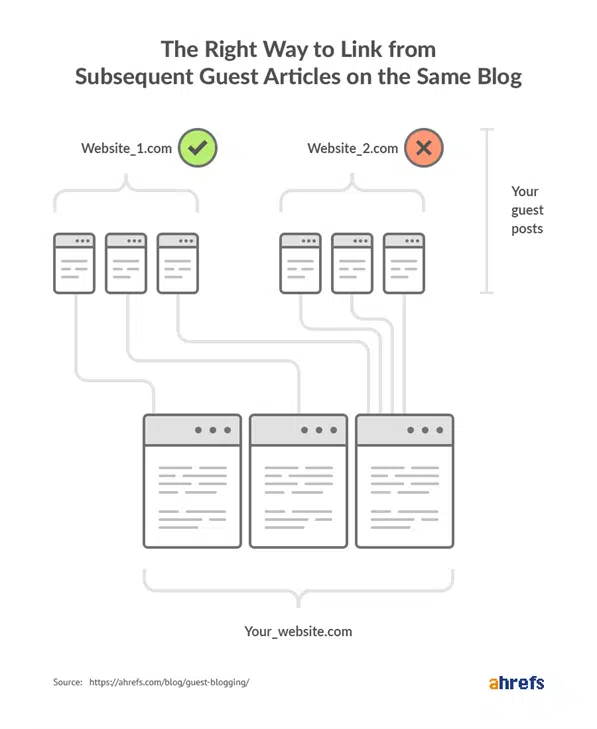
Above all else, always maintain a quality-over-quantity mindset. The effectiveness of guest posts in link building depends on how useful the links are, not how many are there.
Remember when I mentioned earlier that it’s awfully hard to get a guest post published on high-authority sites like Forbes and Entrepreneur? Let’s assume that, by some miracle, you managed to get them to agree. You can already feel the wave of traffic about to flood your guest post.
But as if guest posting already takes away editorial control from the author, guest posting for a big media site is proof that the author has no control to begin with. Sam Dogen, known on the internet as the Financial Samurai, recalled his experience writing for sites like the Los Angeles Times and The Wall Street Journal since 2010. Here are two pitfalls he shared.
The first one is the ungodly amount of time it takes to prepare the final draft. Editors will keep asking for revision after revision, drawing out the time up to four times as long as publishing your own work. One of his articles took a month to edit before getting published.

Second – and perhaps the bigger issue – is that these sites can rewrite the article any way they desire. Dogen remembers adding 800 words to a 1,200-word guest article, only for the final version to be just 1,100 words long. In most situations, editors add or remove words from the initial draft, resulting in some parts being lost in context.
By the time the article is ready, current affairs may have changed drastically. Imagine writing about the importance of proper link building today, only for Google to decide in a new update that all link building practices are black hat SEO by the time it gets published. Of course, that won’t happen anytime soon, but you get the idea.
For the record, Dogen doesn’t completely dislike such guest posting opportunities. He suggests informing editors of discrepancies or inaccuracies in the article after the article goes live. If the mistakes go uncorrected, he advises posting a follow-up post on your personal blog.
If you want to make the editor’s life easier, consider doing some proofreading before submitting the article. Studies show that grammar mistakes are the top reason editors scrap submissions for guest posting, more than badly written pitches.
If self-proofreading isn’t an option, alternatives include hiring a professional service or using online tools. A quick note about the latter: There are cases of plagiarism checkers duplicating anything their users run through them. Using premium tools may be more viable than free ones.
As editors deal with a slew of emails – not to mention pitches – every day, it’s normal for them to be unable to get back to the guest poster immediately. They get so many – with most being outright unacceptable for their sites – that you can feel their frustration reading their guest post policies. Here’s an example from TechCrunch, which gets over 13 million visits monthly.

Here’s another one from the now-defunct tech blog Gigaom.

There isn’t much that guest authors can do apart from waiting for a response. Some blogs specify when to follow up on a pitch or submission, which must be followed at all times. Sometimes, the article may already be live without a heads-up, so it pays to check the blog first.
What if there’s no time frame specified in the policy? Experts advise waiting for at least a week or two from the submission date before sending a follow-up message. Fortunately, this email is much shorter than a pitch, consisting of a few lines, and follows the same rules.
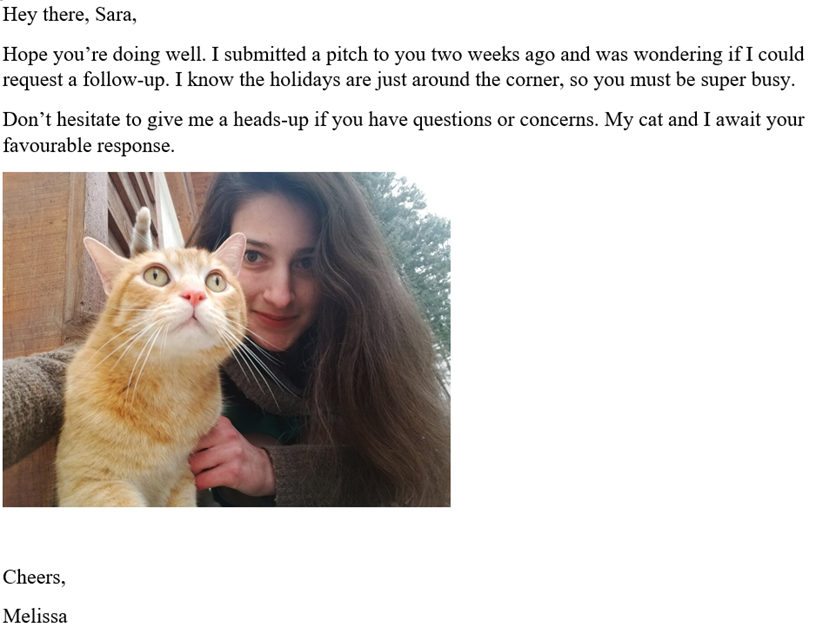
The time to send the follow-up is equally important. Experts also iterate that sending the email before the day ends is a good way to get on the editor’s bad side and for the email to get buried under the next day’s inbox. Any time before noon is ideal, as editors are still fresh from their good night’s rest and cup of coffee.
Conclusion
Anyone whoever claims that guest blogging is a sure-fire way to go up the search rankings quickly is either lying or not getting the whole picture. In a post-Penguin SEO world, content reigns supreme over promotion. Expect minor gains, at least in the first several months of guest blogging, even if the quality and schedule are consistent.
These pitfalls won’t make the struggle any less hard, but working around them isn’t impossible. Understanding guest blogging’s potential for misuse and abuse is crucial in performing its best practices, from knowing your niche to being nice to editors. Guest blogging, regardless of what Google’s minds think, isn’t going away anytime soon.
If you want to deliver content that’ll wow publishers, you can learn more about turning boring content into masterpieces in this blog. Trust me; editors will thank you for making their day more interesting.
Subscribe to Our Blog
Stay up to date with the latest marketing, sales, service tips and news.
Sign Up
"*" indicates required fields


